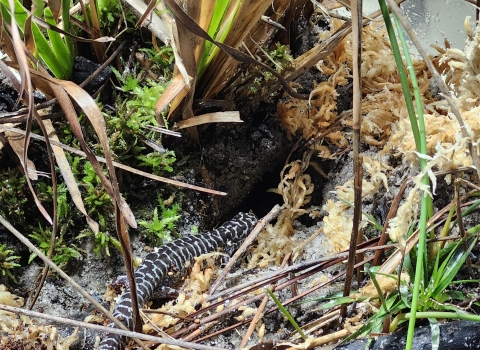The U.S. Fish and Wildlife Service announced today that $1.68 million in grants will go to seven Native American conservation projects in the two states. "I am pleased with the diversity of fish and wildlife habitats and species that will benefit from the tribal grants projects.? said U.S. Fish and Wildlife Service California and Nevada Manager, Steve Thompson.
The Tribal Landowner Incentive Program will provide more than $567,000 to fund five projects, and the Tribal Wildlife Grants program will fund 4 proposals with $700,000.
The Tribal Landowner Incentive Program grants focus on the protection, restoration and management of habitat to benefit species at risk, including Federally-listed endangered or threatened species, proposed or candidate species, as well as species of tribal concern. The Tribal Wildlife Grant program provides funding to defray the cost of the implementation of programs that benefit fish and wildlife and their habitat, including species that are not hunted or fished.
The grants, made to Federally-recognized Indian tribes, were made possible under the Related Agencies Appropriations Act of 2002, and through a component of the State Wildlife Grant program.
A new publication, Tribal Wildlife Grant and Tribal Landowner Incentive Program Periodic Report 2006, provides brief summaries of all grants awarded since the programs were initiated, with feature-length articles on 20 projects. Copies of the report are available through the office of the Native American Liaison by contacting Patrick Durham at pat_durham@fws.gov .
2007 Tribal Landowner Incentive Grants
California:
-- Hoopa Valley Tribe, $120,000
Improve Habitat Protection during Timber Sale Layout and Timber Harvest, and Implement Habitat Improvement in the Wildlife Corridor Lands on the Reservation.
--Los Coyotes Band of Indians, $114,250
Teaching Our Youth About Their Heritage.
--Round Valley Indian Tribes, $114,500
Mill Creek Riparian Corridor Development and Restoration Enhancement Module.
--Yurok Tribe, $98,263
Lower Terwer Creek Streambank and Riparian Restoration Project .
Nevada:
--Duckwater Shoshone Tribe, $120,000
Spring and Stream Channel Restoration of Little Warm Spring for the Recovery of Railroad Valley Springfish.
2007 Tribal Wildlife Grants
California:
--Hoopa Valley Tribe, $200,000
Fisher Habitat Use and Population Monitoring on the Hoopa Valley Reservation.
--Hopland Band of Pomo Indians, $189,800
Hopland Tribal Fish Habitat Survey and Culvert Design Study.
--Karuk Tribe, $111,000
Bluff Creek Habitat Protection and Road Decommissioning Implementation Project.
Nevada:
--Duck Valley - Shoshone Paiute Tribes, $199,878
Survey and Monitor the Impacts of West Nile Virus on the Duck Valley Indian Reservation's Greater Sage-grouse Population.
The U.S. Fish and Wildlife Service is the principal Federal agency responsible for conserving, protecting and enhancing fish, wildlife and plants and their habitats for the continuing benefit of the American people. The Service manages the 97-million-acre National Wildlife Refuge System, which encompasses 547 national wildlife refuges, thousands of small wetlands and other special management areas. It also operates 69 national fish hatcheries, 64 fishery resource offices and 81 ecological services field stations. The agency enforces federal wildlife laws, administers the Endangered Species Act, manages migratory bird populations, restores nationally significant fisheries, conserves and restores wildlife habitat such as wetlands, and helps foreign governments with their conservation efforts. It also oversees the Federal Assistance program, which distributes hundreds of millions of dollars in excise taxes on fishing and hunting equipment to state fish and wildlife agencies.


